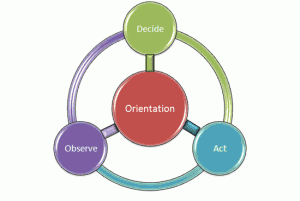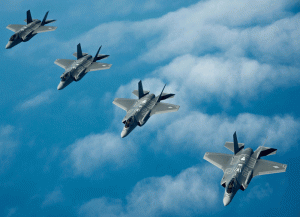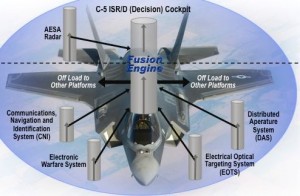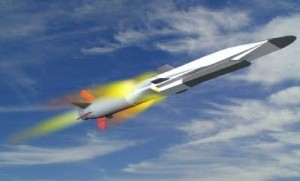2013-07-18 by Michael W. Wynne, 21st Secretary of the USAF
We are now 13 percent complete of the 21st Century and it is time to really assess what constitutes airpower for this century.
We have over a century of maturation and have pursued the widest range of complimentary science to augment the notion of flight. We have gone very slowly, with vertical take-off and landing; we have gone very fast with the breaking of the sound barrier, and the achievement of both commercial and military supersonic transport.
Most of this experimentation was accomplished during the first half century of flight.
We see cost as an overriding factor which puts the air domain well beyond the scientific realm; and into the context of engineering.
Unfortunately; our consideration of cost (without consideration of context) blinds us to the competitive spirit that might allow a competitive nation state to overtake our capability and thus see themselves in a position to best us in a local or world struggle.
Or we might simply self-deter for we fear the outcome, and are not certain to prevail.
The OODA Loop Analogy
Interestingly; we are now at the point where we need to assess the Air Power domain; and we should do this in a context. One feature that we need to emphasize is the underpinning for what all of our Armed Forces are purposed.
We source the Armed Forces from the preamble of the Constitution wherein the proposition of forming our nation was first ‘To Provide for the common defense.’

Thus we can assess whether we are continuing to accomplish this dominant mission.
As a part of the mission is to preserve to the maximum extent America’s ability to act in its best interest to preserve the nation.
In that context, let us look at the contribution of the Air Power Domain as a part of the larger Observe, Orient, Decide, Act Loop, which we refer to as the OODA loop which was brought to our attention by John Boyd (From “The Essence of Winning and Losing,” John R. Boyd, January 1996). John even saw his signature achievement of the theory of Energy Maneuverability as an execution element in the larger OODA theory.
Boyd breaks this cycle down to four interrelated and overlapping processes through which one cycles continuously (From Wikipedia, the free encyclopedia) :
- Observation: the collection of data by means of the senses
- Orientation: the analysis and synthesis of data to form one’s current mental perspective
- Decision: the determination of a course of action based on one’s current mental perspective
- Action: the physical playing-out of decisions
Boyd expanded on this in his later years to be applicable to other aspects of competition.
His lectures would allow for multiple sensor functions delivering the data or converting it into information. Further the lectures took on an academic look at mental perspective; allowing for a look into cultural, and genetic as well as other inputs arriving at later stages of the orientation period. This is then followed by a decision point by an authority determining the course of action based upon their mental accumulation of data converted to information, and sufficient command and control relative to the situation at hand; and then a presumption of guidance and control at achieve the expected effect and cause an action to occur.
The Vision for 2013 was released as the New Chief of Staff was finding the fiscal situation to be very real; so one must consider it aspirational; in spite of the use of the Commanders intent. That said it is instructive to look at the vision along the continuum of the early Strategic ideas and in light of the intellectual underpinning of the OODA loop.
The Current USAF Vision Statement
The OODA loop baseline will be revisited later to talk about the overall evolution of airpower, but we first need a baseline statement of the current orientation of the USAF. A way to do this is to look at the key elements highlighted from the recent USAF vision statement.
‘The world’s greatest Air Force – powered by Airmen, fueled by innovation.”
The Air Force’s enduring contributions are rooted in our original roles and responsibilities that were assigned in 1947.
Today we call them:
(1) Air and space superiority;
(2) Intelligence, surveillance, and reconnaissance;
(3) Rapid global mobility;
(4) Global strike; and
(5) Command and control.
We already combine our air, space, and cyber forces to maximize these enduring contributions, but the way we execute these five calling cards must continually evolve as we strive to increase our asymmetric advantage.
To strengthen our enduring contributions, the Air Force will:
• Deter and defeat adversaries with a credible first look, first shot, and first kill capability;
• Hold our adversaries and what they value at risk while operating on a global scale with unmatched joint integration;
• Exploit and defend air, space, and cyberspace, especially in contested environments, while denying our adversaries unrestricted use of the same;
• Integrate and organize our Active, Reserve, and Guard forces to leverage the unique strengths and perspectives of each to seamlessly execute Air Force missions;
• Enhance relationships and interoperability with our sister Services, other government agencies, allies, and partners;
• Train better Airmen to bring their unique specialties together in more realistic, intense, and diverse environments to advance integrated airpower operations;
• Emphasize readiness to ensure the highest quality force, regardless of size;
• Modernize our capabilities to reduce operating costs while attaining desired effects with greater persistence, survivability, longer range, and more versatile payloads.’
This excerpt allows a future look but it is important to look back to gain some grounding.
It bears noting as well that with Cyber in the Mission of the Air Force; neither the Air Force, nor the Nation possess the capability of superiority; so Cyber struggles as did Air and Space in their formative years to be defined within the domain of warfighting.
Returning to the OODA Loop Analogy
Casting the current USAF Air force vision against the underpinnings of the OODA loop is revealing.
ISR and Observe
Strategically; the Intelligence, Reconnaissance, and Surveillance activity fits nicely into the Observe element, as does the emphasis on Space. This is all about gaining access to information that might otherwise be denied.
There is also an emphasis on enhancing relationships, and interoperability with our ‘go to war’ partners. This should, in the era of social media, extend to the area under current analysis; the Observable Data that is captured by all of the flying or orbiting sensors that the ‘go to war’ partners bring.
This is an element that our intelligence services are currently concerned with, the flow of observable data that is shared all around the globe. The Air Force must raise the awareness of data made available from its fleet; and from allied and sister services fleet of sensors.
For the moment, let us presume that there are plans underway to increase the flow of data and apply advanced data analytics such that our forces can be made aware of all available observable data; and that it can be converted into information that can be made available to commanders and planners.
In this way, for certain, we can fulfill the requirements of step one of the OODA Loop by addressing fully Observe.
As we know this must be an investment stream that can extract maximum knowledge from all the investment the Us has made into ‘see deep’ RADARS; whether they are on flying or space platforms.
The real issue is where does the captured observations go; and how do they contribute to the next step in the OODA Loop?
Data for data’s sake is hardly the point; better decision making and better risk management is the challenge to be met.
Orient and Training, Readiness and Con-Ops Innovations
In the Orient part of the OODA loop, the Vision emphasizes readiness and training, in two major areas, training for Air Power Exercises; which points to exploring the capabilities, limits and surprise elements that may be available to the engaged forces, on behalf of the commander.
Joint and partner exercises will add to the leverage and agility in the planning cycle.
Clearly, training the decision makers in the capability of their forces is a tricky element as well. If the US military has capabilities which the decision process or the civilian strategic elites do not understand or do not understand how to use, there is a serious policy gap.

Concepts for joint effect; such as ‘Extending the reach of AEGIS’ which was published in the Naval proceedings, shows that there is a compounding effect of application of our modern systems is ripe for exploitation, but only if you do so.
Recently, Air Force Commanders were speculating as to the relevance of the international component of a fleet of F-35’s when they realized that in this modern system; it was a social media effectively.
That is, that any relevant data was shared across the reach of the fleet, and therefore could be made available to at least the lead airman. Further it was accomplished machine to machine, and did not require a question and response; but was data pushed from machine to machine.
This advance impinges on Orient at the local level; and could with sufficient transmissibility, alter the Orient view for the Battle Manager; and the Strategic Decision Makers up to and sometimes including the National Command Authority.
It is good to see the vision point to integration of the usually more experienced Guard and Reserve. It is relevant to realize that when the order came to neutralize Mr. Zarqawhari in Iraq; it went to a guardsman who was trained and ready to conduct the mission and fulfill the effect requested by the Battle Manager.
Orientation really goes to the nature of readiness. It is now necessary, but not sufficient to understand readily the capability of the platforms under one’s command but to as well understand the synergy and extension available through the interaction of the various offered platforms from the ‘go to war’ partners.
The discussion on Orientation could extend, as it does during War Games at the Diplomatic level to competitor reactions and moves; but in this look; we will limit ourselves to implementers of Options developed by the National Command Authorities; or to the Engagement commanders.
A key aspect is the use of new combat systems to determine the situational decision making and to shape coalition strike and defense strategies.
Dynamically, the use of fifth generation aircraft as target location systems is not as satisfying to the pilots, but may serve in the role of Army forward observers in concealed locations. If done fluidly, the flow of information on targets must be near real time, such that the data proves useful to commanders in pressing the plan.
Decide and C2 Dynamics
Thus we come to the point of Decide; and the Decision methodology.
The Vision Statement talks of Command and Control Systems as a paramount operating commitment. This operation of a resilient system, which could be under assault during the run up to an engagement; as the World saw during the run up to the invasion of Georgia by the Russian Forces; and the run up to diplomatic negotiations with Estonia. Our peer competitors got to practice with real time integration of Cyber and Physical Forces; which we have done in Joint Exercises since.
Whether it is a day without space; or communicating under duress; it is all a part of the Decide point in the OODA Loop.
When looked at as a process leading up to and flowing from a point of decision; it becomes clearer what the value of pre-decision direction and expectations for force disposition; and the training for Commanders around and below the Command Authority.
As the Air Force considers itself to be a part of the run up and flow down; it is incumbent on the Air Force to ensure integrity of the data flow in both directions.
Thus, there is a sharing of this integrity with the various agencies that are information providers; and decision executors. The Air Force mission to be in Cyber is all about an awareness of this responsibility; and the impact of trusted data to its forces. As the saying goes; once you take off; it is all about Wi-Fi.
Act and Operations
Finally it is time to examine Act.
Strategically; this is where most Armed Forces dwell. This is also the beauty of the OODA loop; as it transcends levels of scope and allows each level to explore uses of the components of its forces.
At the same time, this devolvement may result in independent behavior and what has become ‘islands of excellence’; or rule by ‘stovepipe’.
One of the best examples is the use of geography to establish operations order between units. In Iraq 2003, the Euphrates River was used by Commanders to separate successful campaigns by the Coalition Army and Marine forces; who contributed to each other by protecting the common flank, which was the river itself.
This became muddled, as progress was different; and the command authorities began to order slowdowns and halts; strikingly similar to Eisenhower commands to the British and American forces in WW II as they approached common objectives.

The “engagement process of content in battle context” which empowers dynamic situational decision making at all levels has the best chance of prevailing. It is the foundation of war winning in the 21st century. Credit: Graphic and Concept Ed Timperlake
https://sldinfo.com/shaping-a-new-approach-to-combat-learning-the-role-of-the-f-35/
For these reasons and more yet, it is heartening to see in the vision statement words like integrate, and interoperable, and building relationships.
Actions taken in the rapid fire future engagement will need nearly machine to machine coordination as the weaponry flies farther; and with more devastating effect.
Also with our forces diminished by obsolescence or budget; we must believe our ‘First look; first shot; first kill’ slogan so as not to waste the most precious commodity of the future fight, projectiles, either missiles, or bullets, or Cruise Missiles.
Credible feedback as the battle progresses may be a difficult commodity, but it is incumbent on the Observe element to continue to provide Situation Awareness to every level of command.
Fully integrating the forces, such that every shooter a sensor; and some sensors as shooters provide facts about targets and anti access platforms will minimize our own casualties.
But, in this element of the OODA loop is where the offensive enterprise resides.
This enterprise is comprised of all the elements for expeditionary warfare, to include resupply.
The Air Force, in designing its force structure is also the supply element for other services in rapid mobility exercises. As an example, their Tanker fleet is not just a servicing agent for itself; but as well for joint and coalition forces.
In the same vein; the Air Force must, in this time of reduced resources, look to its coalition partners as it has in the past to provide some of the needed firepower, and support elements, well beyond airfield support.
Thus, to paraphrase Adm. Mike Mullen’s oft-repeated comment about the Thousand Ship Navy, which relied on and thus counted coalition partners among the fleet elements. So also the Air Force must count the Tankers and C-17’s; as well as the complementary Fighter elements that may be made available to counter competitor actions.
It is increasingly clear that our governing body; whether Executive, or Legislative; will not be providing the complete complement of ready forces.
How this risk is characterized should be left to the word of the active Military Commanders; but it has been clear in the last century of warfare; that there will be available coalition equipment.
This makes interoperability more than a slogan; but a requirement.
Governance for situation awareness sharing becomes an issue, when they are your wingman.
How this develops during this current transitional period will be crucial to future outcomes, both diplomatic, and militarily; for either regional or global competition.
One of the first uses for the OODA loop was to foster energy maneuverability in Fighter design. This application of physics was at first left to the winners of engagements during World War I and World War II; but Col. Boyd used it to advocate for the design of the Light Weight Fighter that became the F-16.
In a famous Photo Comparison; his theory was played out illustrating the turning radius of the F-4 and the F-16; where it was clear that the F-16 could start out as the hunted and end up quickly as the hunter. From this illustration, well over 7,000 aircraft have been produced for use by Air Forces all over the world; and many more configurations of missiles, which even the odds with very high G-turns to counter the initial effect.
This has clearly resulted in fewer one on one fights; and a greater concentration on fleet-to-fleet operational concepts.
‘First look, first shot’ is the war cry today; not ‘Give them the gun’.
During this same period; concepts for anti access; and counter anti access became design elements; and conceptions for 5th Generation Fighters came about via the F-117; the B-2; the F-22, and the F-35.
It is safe to say that the ferocity of the anti access forces appearing in a less than peer competitor during the Vietnam War was a strategic surprise; and countered by technological advance and investment.
As we will read further, the Act part of the OODA loop is highly dependent on whether this technological advance will be followed through to a real force advantage.
It seems clear that our competitors would love to see abandonment of this long themed strategy; and they were particularly cheered by the cancellation of the B-2 and the F-22 in their time; leaving America with stunts of force, in lieu of show of force in both cases.
The fate of the F-35 remains fluid; but for the peer competitor; another termination would be simply thrilling.
In this current budget squeeze, there are ample supporters thus far.
There seem no doubters among those allies who sense danger; and thus orders from our future coalition partners are ripening.
The Challenge
We have seen the Air Force role in the Observe, Orient, and Decide elements, but in the Act is where the essence of Military Force lives. Sir Winston Churchill has best described the current state of affairs as follows: “The power of an air force is terrific when there is nothing to oppose it.” (1948)
This has been the state of play in the engagements for the past quarter century.
But this has misled key decision makers to consider investment in the air domain as wasted; as they did not see peer competitors in the near future; and decided that sitting on their lead was sufficient and saved resources to boot.
Sec Gates in his speech to the Economic Club in Chicago said:” Consider that by 2020, the United States is projected to have nearly 2,500 manned combat aircraft of all kinds. Of those, nearly 1,100 will be the most advanced fifth generation F-35s and F-22s. China, by contrast, is projected to have no fifth generation aircraft by 2020. And by 2025, the gap only widens. The U.S. will have approximately 1,700 of the most advanced fifth generation fighters versus a handful of comparable aircraft for the Chinese. Nonetheless, some portray this scenario as a dire threat to America’s national security.”
This projection turned out to be false in two directions.
First fifth generation fighters began to pop up before he left office; and cutbacks started almost immediately to the F-35 program. The potential for the threat to America’s security is certainly not yet dire; but one wonders about the drift.

As Gen. George Kenney put it. “Air power is like poker. A second-best hand is like none at all — it will cost you dough and win you nothing.” (1945).
Even Secretary Donley; who, while Sec Gates was in position, wrote a letter supporting Sec Gates decision to stop producing F-22’s; has now testified in Jan 2013 that: ” The Air Force has stretched the risk we can prudently take and must push now to get the most combat power possible from our forces.”
General Michael Moseley in testimony before the House Armed Services Committee testified in 2008. The Air Force should have the capability to put an American silver cloud over any GPS location on earth, to deter and dissuade competitors from taking actions counter to our nations well being.
This follows a long line of similar attributions; and was underscored in the early 1950’s when Gen Curtis Lemay argued during a similar period of drawdown that he needed a sufficient fleet of B-52’s and KC-135 Refueling Tankers to allow ranging targets anywhere on the globe.
Whether Long Range Missiles or the current fleet of bombers; the recent flight of the F-22 and the B-2 to Korea and back was symbolic of this desire.
The action was at once applauded and then decried as too much military show of force.
Applauded as it showed both the friends and enemies that we retained the power to hold hostage distant targets, including those states, which have substantial Integrated Air Defenses. Decried by those that worried about any force engagement.
Did this deter, did it dissuade? One has to simply listen to the dissipation of the noise and furor.

Credit: http://www.11news.us/05/speed-of-soundx-51a-waverider.html
All of the elements of our current Air Force, whether Space, Cyber, transport, and our magnificent Airmen who provide at a moments notice; or at a deliberate pace are responding to the National Command Authority decision to act.
My own doctrine can be clearly put: ” If you are ever involved in a fair fight; it is the result of poor planning.” emphasizes proper action throughout the OODA loop; and entails actions by resource decision makers and department leadership to maintain our strength and resilience in periods of high activity; and periods of pause.
We have a clear need to by 2025, for the Air Force to size its its forward deployed and tip of the spear capabilities around the Fifth Generation force construct.
The Fourth Generation Aircraft should be dominantly assigned to the defensive enterprise, protecting the homeland and some expeditionary locations.
The vulnerability of large Command and Control aircraft is currently well known; but America continues the belief that we will own the skies in the future fight; an unsustainable prediction.
They may retain utility in a positive aftermath; but one wonders about the allocation of resources between assured victory, and the aftermath.
This is the decision that must underscore the future of Air Power. As one fighter pilot put it when asked about the results of ‘Cope India’ as early as 2007; thank goodness we competed with degraded capability; because when the competitor discovers they can ‘kick your ass; they won’t stop at their border or yours’.
That’s when it will get ugly.
‘Peace is our Profession’ stated the Strategic Air Command Motto. Herman Kahn reminded his listeners at SAC that he hoped that some of them could fight and win a war.

